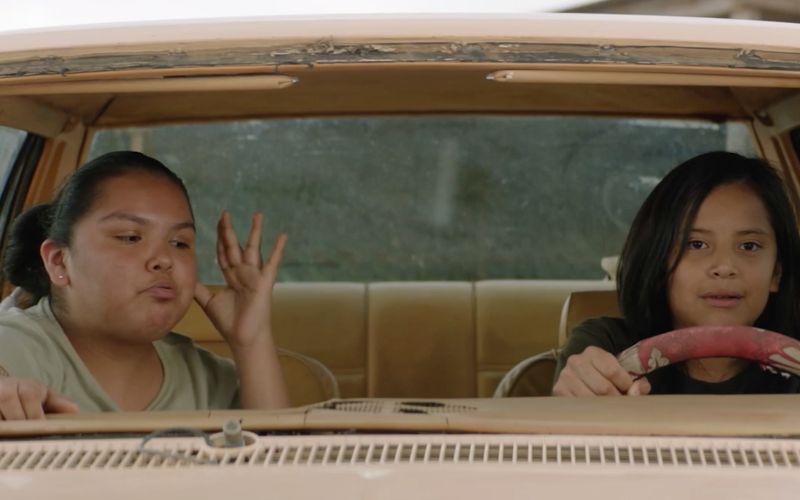
- Details
- By Kaili Berg
The Mother Tongue Film Festival is making a return to the National Mall from February 21 to February 24. Presented by the Smithsonian’s Recovering Voices initiative, the festival is a celebration of cultural diversity, language preservation, and storytelling. This year’s line-up includes 23 films spanning 27 languages.
In its ninth year, the festival’s timing couldn’t be more fitting, as it coincides with the United Nations International Mother Language Day. This global observance highlights the importance of linguistic diversity and the need to protect and promote minority languages around the world.
The festival’s theme, “Finding Balance,” invites attendees to reflect on the concept of equilibrium in various aspects of life, from personal journeys to societal dynamics. Festival co-director and chair of anthropology at the Smithsonian’s National Museum of Natural History, Joshua Bell, expressed his excitement about the diverse narratives that will be showcased.
“From children to adults, families to the individual, we are highlighting the unique journeys of people searching for enduring balance and harmony,” Bell said in a press release.
“Language is culture,” Amalia Córdova, festival co-director and supervisory museum curator of world cultures at the Smithsonian’s Center for Folklife and Cultural Heritage,said in a press release. “In our efforts to strengthen cultural knowledge, it’s crucial that people have access to diverse stories through the lens of language diversity. The festival will be another opportunity for filmmakers to connect audiences to these stories.”
This festival’s lineup includes an array of screenings and events, all of which are free and open to the public. Among the highlights is the opening ceremony on February 21st at the Smithsonian’s National Museum of the American Indian.
The evening will kick off with a screening of “Frybread Face and Me,” a critically acclaimed film about two adolescent Navajo cousins bonding during a summer herding sheep on their grandmother’s ranch in Arizona. Following the screening, attendees will have the opportunity to engage in a Q&A session with Charley Hogan, one of the film’s protagonists.
Throughout the festival, attendees can expect thought-provoking screenings and discussions. On February 22, the Smithsonian’s Hirshhorn Museum and Sculpture Garden will host “Regeneration,” a program featuring films that explore stories of loss, revelation, and recovery. This includes “Mother’s Tongue” and “Mamá/Mom,” which delve into the experiences of youth confronting generational trauma.
“Bridging Worlds,” scheduled for February 23 at Planet Word, will intersect love and resistance through films like “Aikane” and “Y SŴN.” These films highlight the spiritual connections and cultural ties that endure amidst political repression.
For more information, visit mothertongue.si.edu.
More Stories Like This
Zuni Youth Enrichment Project Takes Top Emerging Artist Apprentices to Phoenix for Artistic Exploration and Cultural ImmersionFrom Dishwasher to Award-Winning Chef: Laguna Pueblo's Josh Aragon Serves Up Albuquerque's Best Green Chile Stew
Rob Reiner's Final Work as Producer Appears to Address MMIP Crisis
Vision Maker Media Honors MacDonald Siblings With 2025 Frank Blythe Award
First Tribally Owned Gallery in Tulsa Debuts ‘Mvskokvlke: Road of Strength’
Help us defend tribal sovereignty.
At Native News Online, our mission is rooted in telling the stories that strengthen sovereignty and uplift Indigenous voices — not just at year’s end, but every single day.
Because of your generosity last year, we were able to keep our reporters on the ground in tribal communities, at national gatherings and in the halls of Congress — covering the issues that matter most to Indian Country: sovereignty, culture, education, health and economic opportunity.
That support sustained us through a tough year in 2025. Now, as we look to the year ahead, we need your help right now to ensure warrior journalism remains strong — reporting that defends tribal sovereignty, amplifies Native truth, and holds power accountable.
 The stakes couldn't be higher. Your support keeps Native voices heard, Native stories told and Native sovereignty defended.
The stakes couldn't be higher. Your support keeps Native voices heard, Native stories told and Native sovereignty defended.
Stand with Warrior Journalism today.
Levi Rickert (Potawatomi), Editor & Publisher


